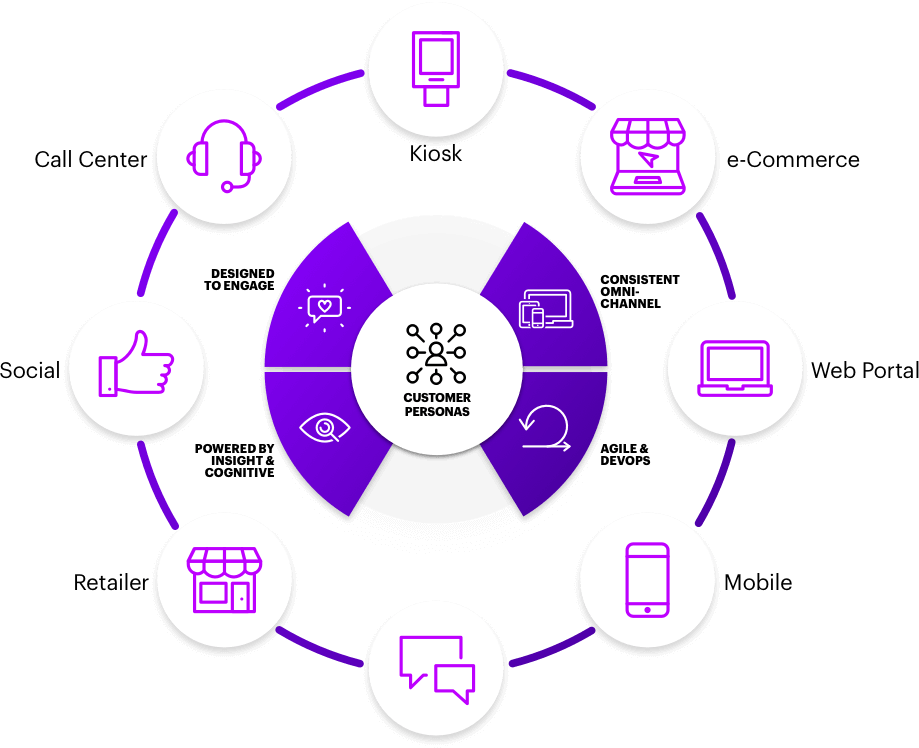The Top Four Adweek 2018 Trends All Marketers Need To Know
By: Matthew Zani
It has been a wild week! Thanks to #AWNewYork 2018, I had the pleasure of immersing myself in panels ranging from Data and AI solutions to VR, AR, Voice, Blockchain, Next Generation Production, Prototyping and beyond. As marketers, we can be easily overwhelmed (and also excited) by the number of shiny objects and metaphysical solutions that we are presented with. In this era of transformation, it’s important to understand all evolving realms of marketing, business and technology in the context of providing great customer experiences that connect to our business goals. All of our activities must be analyzed within the same ecosystem and then strategized and executed upon accordingly.
Knowing this, we MUST cut through the clutter and determine the key factors of change that matter to the businesses we seek to build and grow. Let’s take a look at the four main themes from my experience at Adweek New York 2018 and how they relate to our evolving responsibilities as marketers:
1. Marketing Responsibility = Business Outcomes
The advertising industry has experienced a shift of responsibility, from advertising and marketing outcomes to business outcomes. We now have the ability to attribute marketing metrics to business results, which shifts the modern marketer’s scope of responsibility well beyond messaging and media KPIs and channel strategy to business infrastructure, technical solutions and innovation.
IBM’s 2018 report, The Modern Marketing Mandate, was widely quoted around the conference. The report states that four out of five of the modern CMO’s responsibilities are directly related to business building and results. We see CMOs getting promoted to CGO, president and even CEO. An example of this can be seen in Bonobos, Micky Onvural, who went from CMO to co-president to CEO in just two years at the company.
That said, if the business outcome and related operational factors are not in sight from the second a marketer sets foot in the door, it’s going to be a tough road and for any marketer. As Kristin Lemkau, CMO of JPMorgan Chase, mentioned during a panel on the evolution of the decision-making funnel, “If you’re a CMO coming into a role and your first move is to look at a traditional customer journey or funnel, you’re probably going to be an 18-monther.” That may sound harsh, but that’s reality.
2. Great Business Outcomes Come From Great Omnichannel Customer Experiences
Not only are we responsible for the business, but stakes are higher and it’s more competitive than ever. Markets all over the world are becoming increasingly cutthroat as disruption has become the norm. The world is flatter, and reviews are accessible everywhere. Every moment within this customer journey is a chance for a great (or terrible) experience. And that cannot be overlooked.
Companies such as SoulCycle, with life-changing missions driven and optimized by customer data and technology, are capturing the hearts and minds of consumers. These companies are built around impactful and immersive customer experiences, and they construct every single one of their actions throughout the omnichannel experience around that notion.
With that understanding, marketers must look at every touchpoint throughout the customer journey and factor each into the marketing and business strategy as an opportunity to drive great experiences. No channel should ever be looked at as if it’s in a silo. Think about what your brand provides, what problems you can solve through new and existing channels, and how they all work together. Every area in which a business interacts with a consumer should be strategized, measured and optimized to create less friction and drive great experiences.
Additionally, customer experiences and employee experiences need to align. If you’re not mapping your employee journey and responsibilities against the experience of the customer, you’re missing 50 percent of the equation. Businesses must understand employees’ roles in creating great experiences and, in turn, construct strategies for all parties that add up to their common goals.
3. New Technology Makes Great Experiences Possible
The reason we are able to attribute marketing success to business outcomes is grounded in technology. We can use technology to build great experiences, from identifying customers early on in their journey and serving them highly personalized messages throughout the relationship, to creating immersive brand experiences that strengthen affinity for the brand.
It was said throughout the week that marketers need to get their tech stack “on one page.” We need to understand the pieces of technology that are important to driving great experiences and focus efforts around them. If data consolidation is a central priority to providing a personalized experience, then focus on getting the infrastructure in place to enhance customer experience. If an automated customer service strategy is necessary, then understand how that fits into the customer journey of the audience and test it thoroughly.
New technologies such as AI are all the rage, but understanding their role is key to using them in a way that makes sense to your business. AI is going to change the way we work and begin making trivial decisions for us so that we can focus on experience strategies and innovation. Machines will worry about the “when” and “where” for a given message, and as marketers we can stay focused on the “why.”
One of my favorite quotes from the week was provided by Mark Penn from The Stagwell Group:
“Numbers + Creativity = Strategy.”
This notion is critical: As we use technology throughout our business to provide us with data and insights, we should also bring our human decision-making strengths to the table. Use numbers and technology to reduce friction and inform creativity. This will ensure that we’re always keeping the customer in mind as we make decisions based on new technology.
4. And stay innovating
Once our business machine is up and running, we can’t stop. We are responsible for taking the data from customer and prospect activities, content interests and reviews and then building innovative products and experiences out of them.
At Adweek New York 2018 we saw examples of companies going to new lengths to bring innovation to their businesses: Subway partnering with Tastemade to bring data from content strategies into product innovation. SoulCycle getting into the audio and media space, turning insights from the final five minutes of class experiences into inspirational audio experiences that can be taken anywhere. Jordan Brands using Snapchat’s AR capabilities as an immersive platform to market and sell new shoes. Monster.com using first-of-its-kind technology to bring new CGI experiences to its omnichannel strategy.
We must be setting up systems and structures that allow for us to turn old functions into NEW ideas, business models, practices and audiences. We must never stop at a well-oiled machine, but rather look at the pieces of our business that we can grow, the channels we should bring our message and experiences into, and the communities we can create and cultivate through our work.
Thanks for the memories, Adweek NYC 2018! Until next year!





